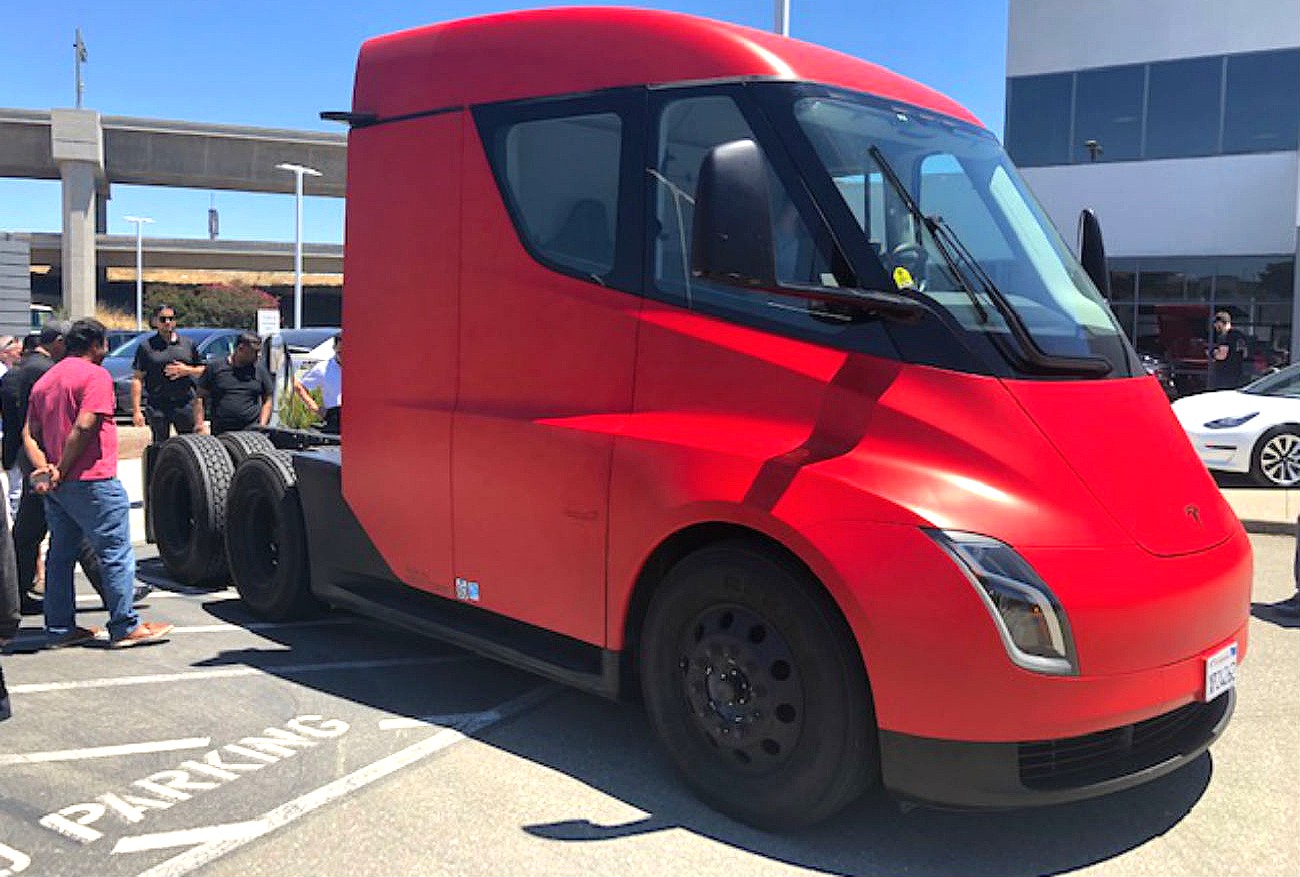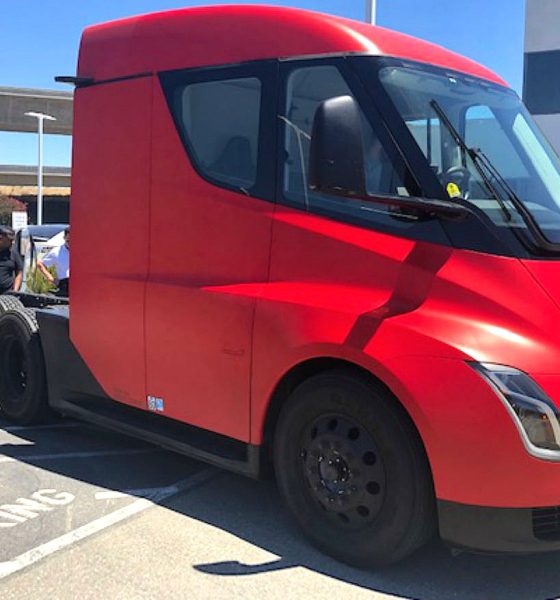

News
Tesla’s nickel future will benefit the company and the consumer
It is no secret that batteries play a massive role in Tesla’s future. Not only do the materials that are mined for the company’s electric cars need to be sustainably sourced, but they need to fit the company’s long and short-term goals.
For a long time, the talk about electric vehicle batteries has been focused on cobalt. The chemical element is controversial for several reasons: it is expensive, it is mined in immoral ways in many countries, and it is not great for the environment. However, companies can choose to source it responsibly, and Tesla has maintained that its cobalt sources are moral and proper in their obtaining of the element.
But during yesterday’s Q2 2020 Earnings Call with Tesla executives, cobalt was not mentioned even once. The focus stood on nickel and the benefits it could play for future company projects, which are based on the foundation that batteries need to be long-lasting and energy-dense. This fact is especially prevalent when it comes to the company’s commercial Semi truck, which will be responsible for transitioning the considerable commerce and trucking industry to function more sustainably.
“Please mine more nickel,” CEO Elon Musk pleaded to mining companies. “Tesla will give you a giant contract for a long period of time if you mine nickel efficiently and in an environmentally sensitive way.”
Nickel is included in the current EV batteries that Tesla uses. A Nickel-Cobalt-Aluminum battery has been produced at Giga Nevada, but the company continues to submit patents that could revolutionize the way its batteries function. Ultimately, the goal is to have million-mile capable cells that will not only translate to a longer lifespan for an electric car but also an extended time of use for Tesla energy storage products.
Musk was adamant during yesterday’s call that Nickel mining is crucial to the company’s fleet of future vehicles. Why? Because Nickel-based battery cells can handle what the Tesla Semi will require to function, which is high energy density. This will ultimately translate to an extended range.
The Semi will be responsible for hauling massive amounts of cargo across the country. It will have to scale steep grades and handle different weather scenarios in every area it travels in. All of these factors will inevitably affect the Semi’s range, and the way to combat that is to come up with more energy-dense cells that are capable of handling a multitude of situations.
“Obviously, those are needed for something like Semi, where every, every unit of mass that you add in a battery pack, you have to subtract in cargo,” Musk said. “So it’s very important to have a mass efficient and long-range pack for four batteries.”
But Tesla’s nickel operation goes far past the company’s Semi plans. It also translates to be beneficial for passenger vehicles that are aimed toward mass-market production, like the Model 3 and Model Y.
After Tesla scrapped plans for the Standard Range RWD Model Y earlier this month, Musk indicated that the new normal for EVs should be 300 miles of range. The Standard Range Y wouldn’t fit that description, as the CEO said it would be capable of less than 250 miles. In Tesla terms, that is unacceptable.
A question during yesterday’s call suggested that Tesla could be shifting from smaller-pack vehicles to larger ones, but that doesn’t seem to be the case. The real struggle is creating effective electric transport across the entire market, instead of for one type of vehicle.
Range is a substantial part of driving an electric vehicle, regardless of who made the car. The focus for Tesla is increasing range and longevity for the company and the consumer. Across each of its cars, the range is of utmost importance, and it begins with nickel mining.

News
Tesla starts showing how FSD will change lives in Europe
Local officials tested the system on narrow country roads and were impressed by FSD’s smooth, human-like driving, with some calling the service a game-changer for everyday life in areas that are far from urban centers.

Tesla has launched Europe’s first public shuttle service using Full Self-Driving (Supervised) in the rural Eifelkreis Bitburg-Prüm region of Germany, demonstrating how the technology can restore independence and mobility for people who struggle with limited transport options.
Local officials tested the system on narrow country roads and were impressed by FSD’s smooth, human-like driving, with some calling the service a game-changer for everyday life in areas that are far from urban centers.
Officials see real impact on rural residents
Arzfeld Mayor Johannes Kuhl and District Administrator Andreas Kruppert personally tested the Tesla shuttle service. This allowed them to see just how well FSD navigated winding lanes and rural roads confidently. Kruppert said, “Autonomous driving sounds like science fiction to many, but we simply see here that it works totally well in rural regions too.” Kuhl, for his part, also noted that FSD “feels like a very experienced driver.”
The pilot complements the area’s “Citizen Bus” program, which provides on-demand rides for elderly residents who can no longer drive themselves. Tesla Europe shared a video of a demonstration of the service, highlighting how FSD gives people their freedom back, even in places where public transport is not as prevalent.
What the Ministry for Economic Affairs and Transport says
Rhineland-Palatinate’s Minister Daniela Schmitt supported the project, praising the collaboration that made this “first of its kind in Europe” possible. As per the ministry, the rural rollout for the service shows FSD’s potential beyond major cities, and it delivers tangible benefits like grocery runs, doctor visits, and social connections for isolated residents.
“Reliable and flexible mobility is especially vital in rural areas. With the launch of a shuttle service using self-driving vehicles (FSD supervised) by Tesla in the Eifelkreis Bitburg-Prüm, an innovative pilot project is now getting underway that complements local community bus services. It is the first project of its kind in Europe.
“The result is a real gain for rural mobility: greater accessibility, more flexibility and tangible benefits for everyday life. A strong signal for innovation, cooperation and future-oriented mobility beyond urban centers,” the ministry wrote in a LinkedIn post.
News
Tesla China quietly posts Robotaxi-related job listing
Tesla China is currently seeking a Low Voltage Electrical Engineer to work on circuit board design for the company’s autonomous vehicles.

Tesla has posted a new job listing in Shanghai explicitly tied to its Robotaxi program, fueling speculation that the company is preparing to launch its dedicated autonomous ride-hailing service in China.
As noted in the listing, Tesla China is currently seeking a Low Voltage Electrical Engineer to work on circuit board design for the company’s autonomous vehicles.
Robotaxi-specific role
The listing, which was shared on social media platform X by industry watcher @tslaming, suggested that Tesla China is looking to fill the role urgently. The job listing itself specifically mentions that the person hired for the role will be working on the Low Voltage Hardware team, which would design the circuit boards that would serve as the nervous system of the Robotaxi.
Key tasks for the role, as indicated in the job listing, include collaboration with PCB layout, firmware, mechanical, program management, and validation teams, among other responsibilities. The role is based in Shanghai.
China Robotaxi launch
China represents a massive potential market for robotaxis, with its dense urban centers and supportive policies in select cities. Tesla has limited permission to roll out FSD in the country, though despite this, its vehicles have been hailed as among the best in the market when it comes to autonomous features. So far, at least, it appears that China supports Tesla’s FSD and Robotaxi rollout.
This was hinted at in November, when Tesla brought the Cybercab to the 8th China International Import Expo (CIIE) in Shanghai, marking the first time that the autonomous two-seater was brought to the Asia-Pacific region. The vehicle, despite not having a release date in China, received a significant amount of interest among the event’s attendees.
Elon Musk
Elon Musk and Tesla AI Director share insights after empty driver seat Robotaxi rides
The executives’ unoccupied tests hint at the rapid progress of Tesla’s unsupervised Robotaxi efforts.

Tesla CEO Elon Musk and AI Director Ashok Elluswamy celebrated Christmas Eve by sharing personal experiences with Robotaxi vehicles that had no safety monitor or occupant in the driver’s seat. Musk described the system’s “perfect driving” around Austin, while Elluswamy posted video from the back seat, calling it “an amazing experience.”
The executives’ unoccupied tests hint at the rapid progress of Tesla’s unsupervised Robotaxi efforts.
Elon and Ashok’s firsthand Robotaxi insights
Prior to Musk and the Tesla AI Director’s posts, sightings of unmanned Teslas navigating public roads were widely shared on social media. One such vehicle was spotted in Austin, Texas, which Elon Musk acknowleged by stating that “Testing is underway with no occupants in the car.”
Based on his Christmas Eve post, Musk seemed to have tested an unmanned Tesla himself. “A Tesla with no safety monitor in the car and me sitting in the passenger seat took me all around Austin on Sunday with perfect driving,” Musk wrote in his post.
Elluswamy responded with a 2-minute video showing himself in the rear of an unmanned Tesla. The video featured the vehicle’s empty front seats, as well as its smooth handling through real-world traffic. He captioned his video with the words, “It’s an amazing experience!”
Towards Unsupervised operations
During an xAI Hackathon earlier this month, Elon Musk mentioned that Tesla owed be removing Safety Monitors from its Robotaxis in Austin in just three weeks. “Unsupervised is pretty much solved at this point. So there will be Tesla Robotaxis operating in Austin with no one in them. Not even anyone in the passenger seat in about three weeks,” he said. Musk echoed similar estimates at the 2025 Annual Shareholder Meeting and the Q3 2025 earnings call.
Considering the insights that were posted Musk and Elluswamy, it does appear that Tesla is working hard towards operating its Robotaxis with no safety monitors. This is quite impressive considering that the service was launched just earlier this year.








